Pressure Switch: The Hidden Hero of Industrial and Commercial Applications
Introduction
Do you ever wonder how your car's engine knows when to turn on or off the fuel pump, or how your home's air conditioning system knows when to turn on the compressor? The answer lies in a small but critical component called a pressure switch. Pressure switches play a crucial role in many industrial and commercial applications, providing precise control over pressure levels and helping to maintain the safe and efficient operation of systems. In this discussion, we will explore the world of pressure switches, their applications, advantages, disadvantages, and more. So, buckle up and get ready to dive into the world of pressure switches!
Pressure switch
A pressure switch is an electrical device that measures the pressure in any environment. This equipment is used to detect the presence of fluid. The pressure switch detects the rise or fall of pressure and the achievement of a pressure value specified by the user.
This equipment is designed to monitor the process pressure and transmit an output signal when the specified pressure (set point) is reached. To do this, the pressure switch applies process pressure to a diaphragm or piston and creates a force. It then compares this force with the force of a spring that has been compressed
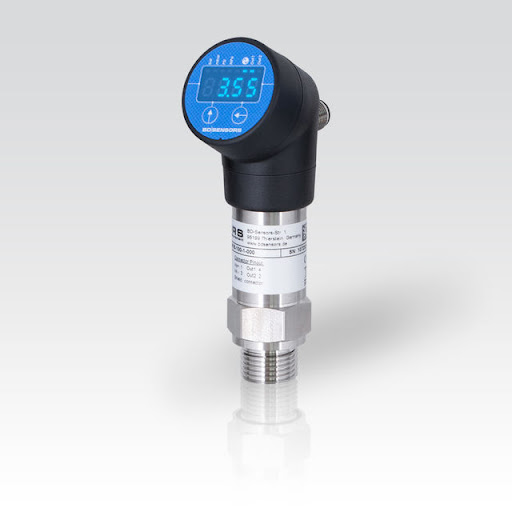

Fig1. pressure switches
Most pressure switches use a diaphragm or accordion body as the sensing element. With the movement of this sensor element, one or more switch contacts are activated and activate an alarm or start or activate a control warning.
Pressure switches have different designs and different sensing elements.
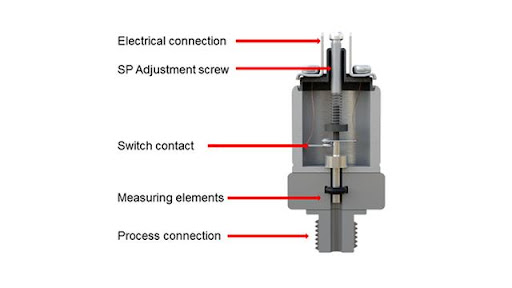
Fig 2. pressure switch cross-sectional view
How does a pressure switch work?
A pressure switch has one or two pressure ports. In a pressure switch that has one port, pressure enters through the port and is applied to an internal diaphragm. If the applied pressure is greater than the pre-compressed spring pressure, the switch contacts open or close the circuit. In this way, an alarm is created in the system and the user is warned that the desired environment pressure has changed.
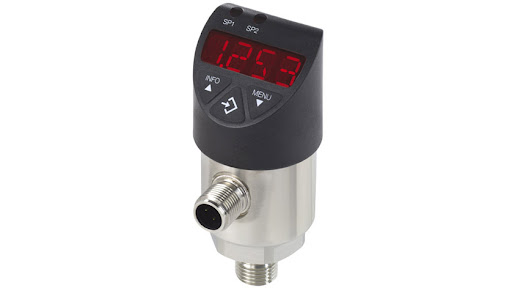
Fig3. pressure switch
In a pressure switch that has two input ports, the pressures entering the switch from these two ports are compared. If the pressure input from one port is different from the pressure input from the other, the pressure switch will alert the user of this change.
Pressure switch components
Terminals
A pressure switch makes or breaks a circuit. Terminals are the components to which the input and output power of the pressure switch is input.
Contacts
Contacts, made of conductive material (90% silver, 10% nickel), are the two members of a pressure switch that are separated or connected to open or close an electrical circuit. When the contacts are separated, the circuit is broken and, for example, the motor stops working.
Diaphragm
A diaphragm, also called a membrane, is made of a flexible material and bends as the pressure changes. When the pressure increases, the fluid pushes against this diaphragm. When the process pressure reaches the desired pressure, this diaphragm separates the conductive contacts and breaks the circuit, or glues them together and completes the circuit.
Pressure switch safety valve
The safety valve of the pressure switch, which is located at the bottom of the pressure switch, is sealed to the top of the one-way control valve by a nylon or copper tube. When the pressure switch contacts are separated, the valve is actuated by a lever to release the pressure trapped between the pump and the check valve.
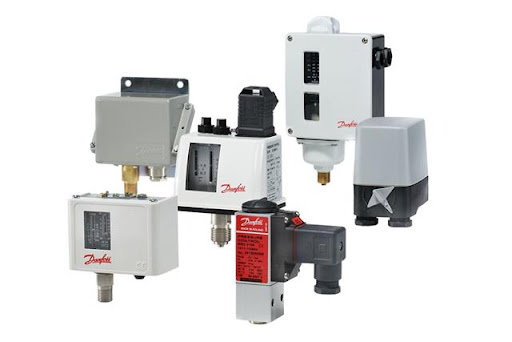
Fig4. industrial pressure switches Danfoss
Adjustment screw(s).
The adjustment screw is used to increase and decrease the reset point and cut point set pressures. Some pressure switches have a secondary screw (usually smaller than the primary spring) that can be used to adjust the trip point pressure without disturbing the reset point pressure setting. By tightening the screw, a greater amount of pressure applied by the diaphragm is required for the screw to separate the contacts. By making the screw looser, it can be moved with less applied pressure.
Auto/on/off lever (or button).
This lever (or, rarely, button) is used to manually disconnect the contacts. Always before connecting the switch to the air compressor or disconnecting the switch from it, this handle should be in the "off" position. Some pressure valves have an auto/off or on/off handle or lever to control the pressure switch. When set to "Auto" or "On", the switch works with the preset reset point and cut point settings to determine when the motor will turn on or off. When it is off, a plastic part is placed between the contacts and keeps the power to the motor off.
Pressure Sensing Element
Mechanical pressure switches are classified based on the pressure-sensing element. The pressure-sensing element is the main part of the switch that mechanically activates the switch from fluid pressure. The piston or diaphragm area on the fluid side is designed to transfer sufficient force from the expected fluid pressure. The larger its area, the more driving force and spring force are required.
“Note that only a small amount of force is required to activate the switch and most of the pressure are controlled by the spring.”
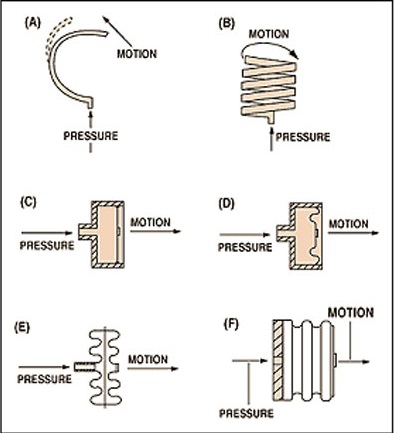
Fig5. Pressure Sensing Element
Comparison of a pressure switch and pressure transmitter
But what is the difference between a pressure switch and a pressure transmitter? Both the pressure switch and the pressure transmitter have a transducer, and this is the only similarity between the two devices. The output of a pressure switch is a digital on-and-off signal. This signal can only have two states, off and on.
However, the output of the pressure transmitter is an analog electrical voltage or current signal that represents the 0 to 100 range of pressure sensed by the transducer. Therefore, the main difference between a pusher switch and a transmitter switch is in the type of output signal. The former outputs a digital on/off signal, while the latter outputs an analog signal.
“The main difference between a pressure switch and a transmitter switch is in the type of their output signal.”

Pressure switches are essential tools for many industrial applications, but for a wider range and more advanced features, Check Pressure Sensor Products.
Types of pressure switches
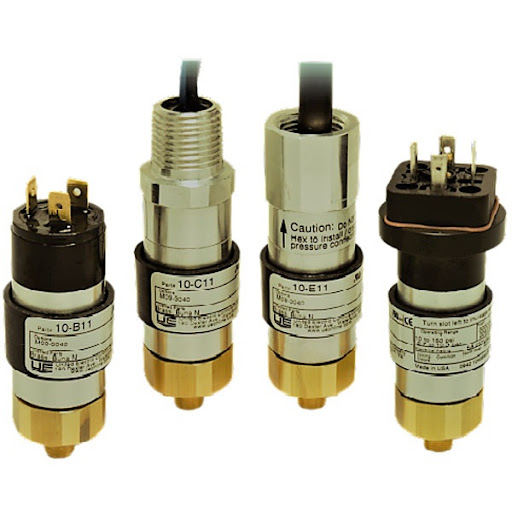
Fig6. pressure switch types
There are two main types of pressure switches, which include electronic pressure switches and mechanical pressure switches. Electronic pressure switches are solid state and do not need to be activated by the pressure sensor element to work. These pressure switches operate indirectly by using other properties such as resistance and capacitance. Mechanical pressure switches are also divided based on the shape and structure of the pressure sensor component.
Electronic (Solid-state) Pressure Switch
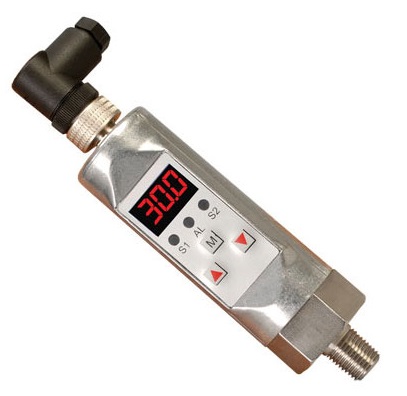
Fig7. solid-state pressure switch
An electronic pressure switch has a pressure transducer, usually a pressure gauge, with additional dedicated electronics that amplify and converts the signals into a readable display. Some electronic pressure switches have analog capabilities; In the sense that they have switching capabilities, they can send continuous and variable signals that indicate pressure readings.
High-pressure switches
High-pressure switches have high back pressure limits and can operate from 1 psig to over 10,000 psig, averaging 4,500 and 7,500 psig. This type of pressure switch can be activated using the diaphragm, piston, or piezoelectric crystals. The most common type of pressure switch is the active diaphragm, which is activated by pressure changes.
As with all pressure diaphragm switches, the activation occurs when the current rises above the set point. Although most pressure switches fail under certain conditions, all high-pressure switches continue to operate and maintain pressure control. High-pressure switches are used as explosion-proof and waterproof pressure switches in extreme pressure conditions due to their ability to continuously control pressure.
Strong pressure switches have high durability and tensile strength and are made of aluminum, stainless steel, Monel, Hastelloy, or steel. Depending on the type of alloy metal, some of these pressure switches are corrosion-resistant.
Low-pressure switches
Light or low-pressure switches are designed to respond to low or reduced pressure fluctuations. These switches are a protection method that prevents pressure drop in a line that can cause damage to the system. If there is no pressure flow in a line, the pressure low-pressure switches will shut down the device, sound an alarm and indicate the pressure.
Like high-pressure switches, low-pressure switches also work in a variety of operating methods, including the diaphragm, piston, and piezoelectric crystal. They are commonly used with hydraulic and pneumatic systems where constant pressure is required. The exceptional pressure sensitivity of low-pressure switches allows them to react to pressure changes in a system. Differential low-pressure switches work by measuring the pressure between two points with different pressures and actuating according to their set point.
Positive low-pressure switches work by converting a positive pressure signal into an electrical output in response to changes in positive pressure. In contrast, a negative pressure switch converts negative pressure signals into an electrical output when there is a pressure drop.
Mechanical (Electromechanical) Pressure Switches
Mechanical pressure switches are more used than electronic pressure switches due to their simplicity and lower cost. All mechanical pressure switches have a mechanical pressure sensing part that changes shape according to fluid pressure. These switches are classified according to the type of pressure-sensing component.
Mechanical (Electromechanical) Pressure Switches
Mechanical pressure switches are more used than electronic pressure switches due to their simplicity and lower cost. All mechanical pressure switches have a mechanical pressure sensing part that changes shape according to fluid pressure. These switches are classified according to the type of pressure-sensing component.
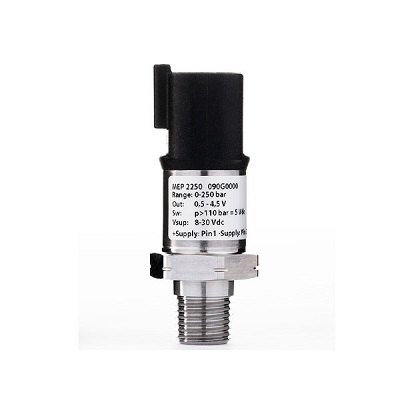
Fig8. electromechanical pressure switch
Bourdon Tube Pressure Switch
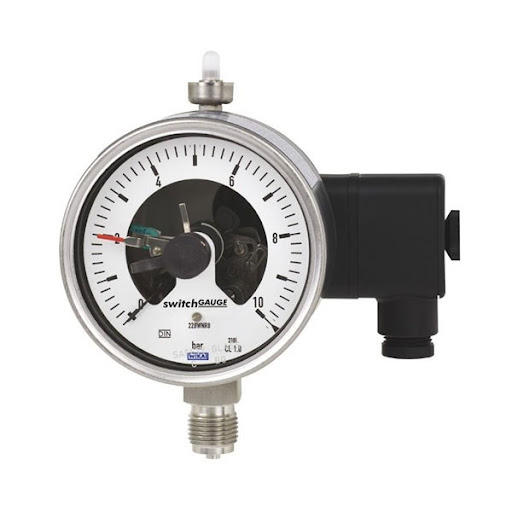
Fig9. Bourdon tube Pressure Switch
A Bourdon tube is a flexible metal or elastomer tube that is fixed at one end, while the other end is free to move. When the pressure inside the tube increases, the tube flattens. This motion is then used to activate the switch.
Diaphragm Pressure Switch
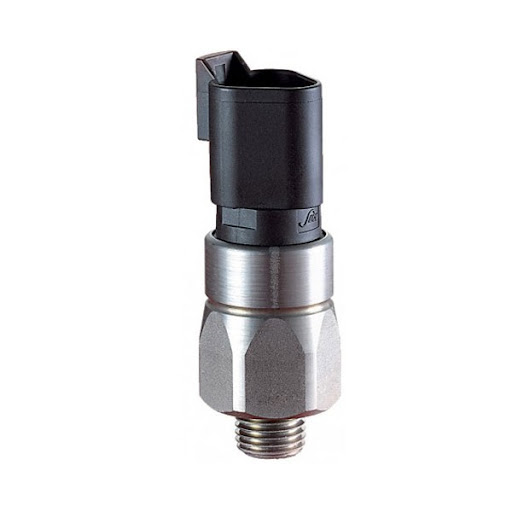
Fig10. Diaphragm Pressure Switch
This type of pressure switch consists of a metal membrane that is attached or welded directly to the wetted part of the pressure switch. In this pressure switch, the diaphragm activates it instead of the piston.
Differential Pressure Switch

Fig11. Differential Pressure Switch
This type of pressure switch is used to compare the pressure between two points in a system. These points are connected to two process ports and can be upstream or downstream of equipment or upstream or downstream of a pipe or conduit. If the pressure difference between the two sides exceeds a threshold, the switch is activated. This type of pressure switch is useful for interconnected controls in monitoring the pressure drop in filters and screens and tank level.
Piston Pressure Switch
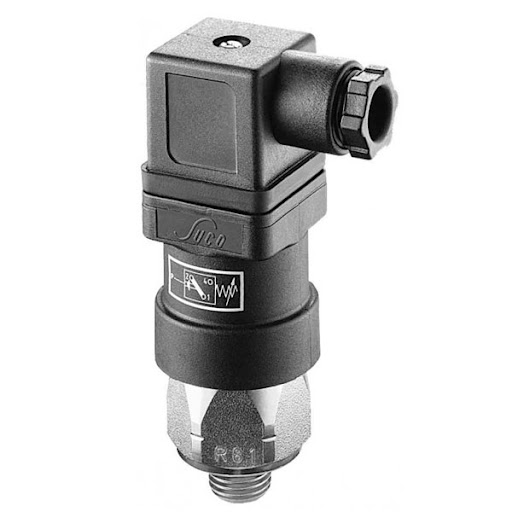
Fig12. Piston Pressure Switch
The piston pressure switch is the most popular and widely used type of pressure switch. As the fluid pressure changes, the piston moves axially and activates the switch. This type of pressure switch can sense fluid pressure directly or indirectly. Direct sensing includes seals such as o-rings to prevent fluid from entering electrical components. Indirect sensing also includes an elastic diaphragm that separates the piston from the fluid.
Snap Disc Pressure Switch
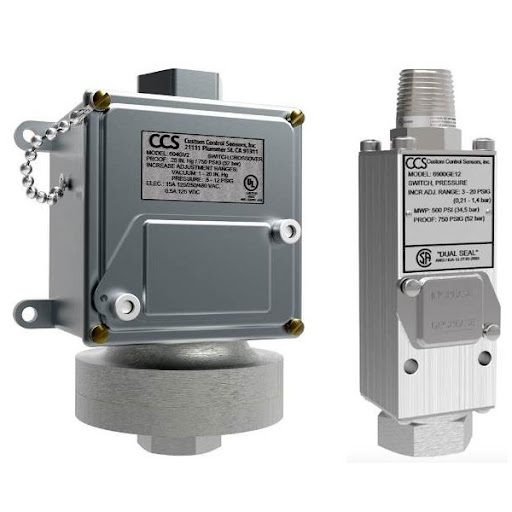
Fig13. Snap Disc Pressure Switch
A disc pressure switch is a mechanical pressure switch that operates by the expansion and contraction of two metal discs that break from convex to concave at a predetermined temperature. When the pressure switch is closed, it completes or breaks a circuit.
In the disc pressure switch design, a thin diaphragm is placed to separate the pressure chamber from the disc chamber. Pressure forces act on the disk surface. The disc is placed in a disc seat and held in place by the diaphragm. They handle pressure with high flow capacity and are used for non-hazardous applications.
Disc pressure switches are very consistent, reliable, and accurate, and their most common application is to monitor specific process temperatures.
Important points in choosing a pressure switch
Like any other measuring or monitoring device, choosing a suitable pressure switch is also done according to various criteria. Choosing the right pressure switch for a given application leads to lower costs and longer device life. In the following, we mention some important points for choosing the right pressure switch.

Fig14. Barksdale pressure switch
process fluid and select the appropriate pressure switch
The chemical properties of the fluid used in a process are effective in selecting the type of material required for the wetted parts. Wetted parts include ports, seals, and the pressurized part of the pressure sensor. These parts must be able to withstand the chemical or physical substances of the process fluid. Part degradation mechanisms can cause part loss through corrosion, oxidation, or erosion. Therefore, attention should be paid to choosing the right pressure switch.
The most common materials used for rigid parts are steel, brass, stainless steel, polytetrafluoroethylene, or polypropylene; While the elastic pressure sensor parts use nitrile rubber (NBR), EPDM, and FKM.
Effective operating temperature for pressure switch purchases
The operating temperature also affects the materials used in the construction of the pressure switch. Certain materials decompose at high temperatures. Suitable materials for high-temperature service can be FKM and 316 stainless steel. The measured ambient temperature must be within the temperature range specified by the pressure switch manufacturer.
The effect of temperature on accuracy should also be considered. When a pressure switch is configured at room temperature, the setpoint temperature may need to be readjusted if the process has a higher temperature.

Fig15. Bosch pressure switches
Buy a pressure switch based on the pressure range
The pressure range describes the set limits of the start and end pressures and is usually called the working range of the pressure switch. It is recommended that the set point be set at 40-60% of the pressure range to anticipate any adjustments or field changes.
Pressure type and pressure switch selection
Pressure switches are often used in positive pressure systems. But in some cases, they are also used in vacuum applications. For negative pressure systems, a vacuum pressure switch or compound pressure should be used
Selection of pressure switch according to the switching function
Switches can be classified and specified according to the number of poles and throws. Pole refers to the number of circuits that a pusher switch can control, and throw refers to the connections that the switch can make. Both pole and throw can be single or double. Classification of the switching function includes the following:
Single Pole, Single Throw (SPST)
This is the main on/off switch and can be NO or NC.
Single Pole, Double Throw (SPDT)
This item is very popular due to its high versatility and can be used as a NO, NC, or CO switch. It can also have three positions, the center of which is an off position for the CO switch. This switching operation is often referred to as single-pole, or triple-throw, and is rarely used for pressure switches that have only two positions.
Double Pole, Single Throw (DPST)
This requirement is similar to SPST switches connected in a common actuator.
Double Pole, Double Throw (DPDT)
This is also the case for two SPDT switches that are controlled by an actuator
Differential switch pressure, dead band, or hysteresis
It is the difference between the start and end pressure. Pressure switches can be adjustable or fixed headbands. Adjustable deadbolts are widely used for water pumping services. On the other hand, fixed dead bands are seen in packaged equipment and alarm systems where modifications are made where modifications are not necessary or avoided to prevent any unwanted changes to the system.
“Diaphragm and pressure-sensitive elements of Bourdon tubes generally have a narrower dead band compared to pistons.”
Pressure indication pressure switch
The indication pressure is the maximum pressure that the pressure switch can withstand without changing its properties or performance. This pressure is also known as overcapacity or maximum system pressure. Pressure detection takes into account the indication of any pressure increase or fluctuation in the system.
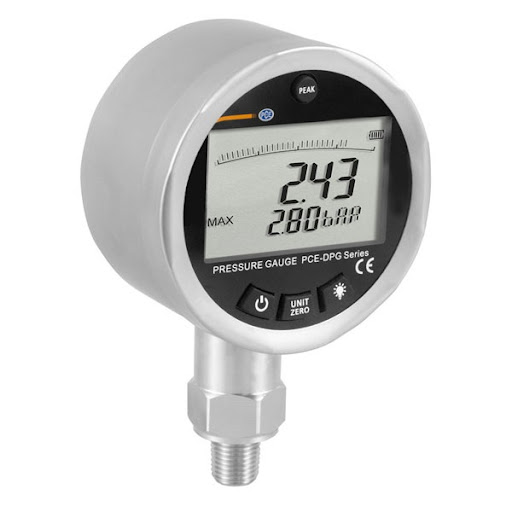
Fig16. Pressure gauge
Precision pressure switch
It indicates the maximum positive or negative deviation from the set point or specified characteristic curve under certain conditions and operations. Accuracy is a more important factor in choosing an analog pressure sensor and an electronic pressure switch. For these devices, having higher accuracy increases the price of the pressure switch significantly.
“Accuracy is expressed as a percentage of the full scale (FS) value. The accuracy of a typical pressure switch for the diaphragm and Bourdon tube is ±0.5%; While pressure piston switches have an accuracy of ±2%. On the other hand, electronic pressure switches have a higher accuracy between ±0.2 to 0.5, depending on the manufacturer.”
Reproducibility of the pressure switch
Repeatability is the deviation between measurements or activations at the same pressure. Repeatability is different from precision because a device can have higher repeatability but lower precision. A pressure switch can be activated many times at a given pressure, but the activations are far from the set point. Like accuracy, repeatability is also expressed in percent of full scale.
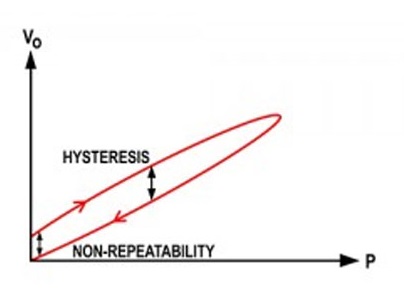
Fig17. Hysteresis diagram
Pressure switch cycle
Cycle means the desired period between two activations. This factor must be taken into account because the continuous deformation of the pressure sensing element exposes it to constant stress and fatigue and reduces its useful life. Bourdon and piston tubes operate on the principle of deformation and are suitable for low-cycle users. For high cycles, piston and electronic switch pressure are used.
“A reciprocating pressure switch experiences less fatigue because its actuation is based on the movement of the piston. The same is true of electronic pressure switches because the deformation in a pressure gauge is much less than in mechanical sensing elements.”
The useful life of the pressure switch
The useful life of a pressure switch is affected by the rate of cycles. Lifetime is the expected number of times a switch can be turned on and off before it fails. Because pressure switches are solid-state devices with no moving parts, they have a longer lifespan, which is expected to exceed one million cycles.
“Among mechanical pressure switches, piston switches have a longer service life than diaphragm switches and Boudon tubes.”
Control system voltage
The voltage of the control system determines the electrical characteristics of the control circuit. The power switch must be of the same current, voltage, and frequency. Otherwise, the switch, and especially electronic switches, may not actuate or have poor accuracy. Control circuits that use pressure switches are usually DC. However, in some cases, AC voltages are also used.
“Common DC voltages are 8, 12, 24, and 30 volts, while AC voltages range from 60 Hz, 24, 120, 240, and 480 volts.”
Pressure switch connections
The proper connection type in a pressure switch should match the process micro connection or pressure port. Male and female threaded fittings are widely used in pressure switch installation. A suitable size of the fittings can be 1.8 to 1.2 inches. Apart from the size and type, the type of fittings is also determined according to the type of environment and matching fittings. The main reason for this is to prevent corrosion either from the atmosphere or galvanic processes.

Fig18. Pressure switch connections
Enclosure protection rating
The protection rating in the zone specifies the environment that the pressure switch can withstand. Since pressure switches are widely used in most industries, there are a variety of enclosure designs that balance robustness and cost. Enclosure protection rating is specified through NEMA and IP numbers.
In general, the higher the NEMA number, the higher the level of protection. On the other hand, IP numbers have two digits. The first digit indicates the degree of protection of solids or particles, and the second digit is for liquids. For general indoor use where only personnel contact protection is required, a NEMA number of one or two and an IP number of ten to 11 are used.
NEMA 3S to NEMA 4X or IP 54 to IP 64 is sufficient for outdoor use to protect against dust, rain, or snow. In the case of washing or occasional water, NEMA 6 and IP 68 are usually used.
A protection rate of switch pressure enclosure for explosive environments
Apart from solid and vapor protection, enclosures must also be rated for their compatibility with explosive environments. ATEX and IECEX marks indicate hazardous applications of pressure switches and other electronic devices. Before requiring an ATEX rating, you must first consider the type of hazardous area in which the pressure switch will be used. This must be done precisely because having higher protection ratings will greatly increase the cost of the device.
“A higher rating does not mean a higher level of protection for a particular application.”

Fig19. Pressure switch protection housing
Applications of pressure switch
The pressure switch has two main functions: to maintain the pressure or level of the system reservoir and also to protect the equipment from damage or low-efficiency operation. In this way, the pressure switch can be used in various applications that we will mention below.

Fig20. One types of pressure switch
Water pumping systems: water pump pressure switch
A pressure switch pump is the most common use of this equipment. Water pumps use pressure switches to cut off power to the motor, which activates the pump in the event of the low pressure or low line pressure. In this way, when the pre-set pressure is reached, the power is cut off.
Compressed air system: air compressor pressure switch
This use is also similar to water pumping systems. Pressure switches are used to cut off power to the compressor motor when low pressure is detected. In this way, the pressure of the wind compressor system or the pressure of the wind pump switch is maintained.

Fig21. air compressor pressure switch
Pneumatic and hydraulic systems
These are control systems that use pneumatic and hydraulic actuators. Pumps and compressors maintain tank pressure and level through pressure switches.
Air conditioning and refrigeration systems
In an air conditioning or refrigeration system, the thermostat provides a control feedback signal. However, if there is a problem with the system, the thermostat will only detect the temperature in the cooled space but not the condition of the equipment. In this situation, the pressure switch acts as a protection that turns off the compressor motor in case of excessive pressure. Another application of the pressure switch in the refrigeration system is protected against low pressure, which indicates a possible refrigerant leak.
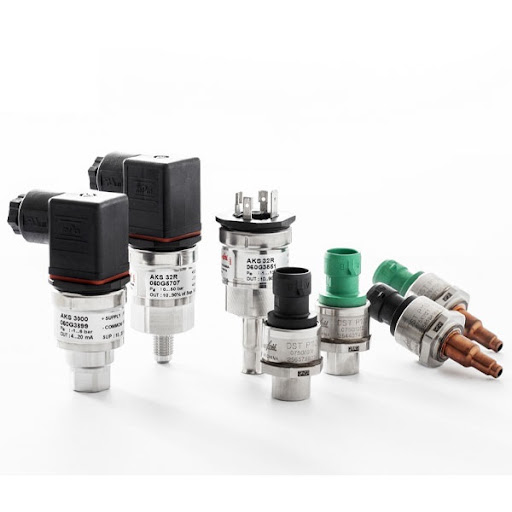
Fig22. Pressure switch in refrigeration system
Furnace and boiler systems
A pressure switch is used in a furnace or boiler as an interlock or safety lock to prevent the igniter from operating if there is a problem with the draft system. This prevents the combustion chamber from working which may lead to incomplete combustion.
Radiator pressure switch
The radiator pressure switch is a part that is responsible for controlling the water consumption circuit; In this way, the package will turn on when the water is flowing otherwise, it will not turn on. The water pressure of the package is under control in all stages of its operation, and if the water pressure is low, it will not be allowed to continue the stages.
If the pressure of the heating circuit is low, it will damage the device, and to solve this problem, a water pressure switch or radiator pressure switch is used, which is a safety device to control the water pressure in the package system, and if the system pressure reaches less than 0.5 bar, it will shut down. It becomes packaged until the pressure reaches above 0.5 bar.
The lurch radiator air pressure switch or smoke pressure switch is an important part in package systems that controls the operation of the package fan and ensures its uninterrupted operation.
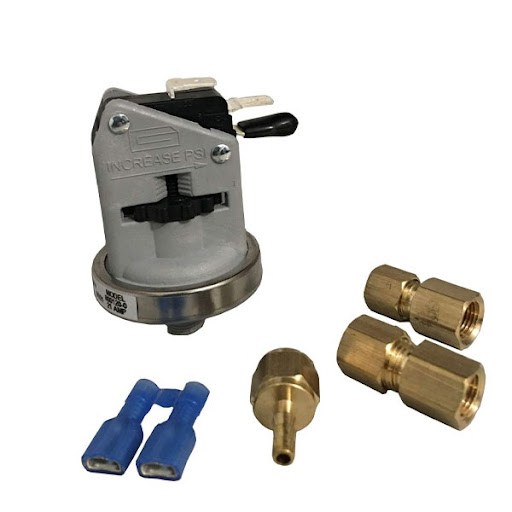
Fig23. radiator pressure switch
Oil pressure switch
The oil pressure switch is an important component in the car engine that controls the oil pressure in the lubrication system. The engine lubrication system delivers oil under pressure to all rotating and moving parts inside the engine. An oil pump draws oil from its container and then pumps it through the oil filter to the channels of the lubrication system. The oil reaches the main bearings and other rotating and moving parts of the engine through channels under pressure. Without this oil flow, no engine will last more than a few minutes.
An oil pressure switch or oil pressure sensor is usually installed in the cylinder block near the oil filter or in the oil filter housing. There are two types of oil pressure switches: in most cars; An oil pressure sensor is a simple switch that opens an electrical circuit when the required minimum oil pressure is present, and in other vehicles, an oil pressure sensor measures the actual oil pressure.
Peugeot cooler pressure switch
The Peugeot cooler pressure sensor or 206 cooler pressure switch is located in the way of its cooler compressor hoses and its task is to measure the cooler gas pressure to activate it and engage the cooler compressor. In addition, this pressure switch in Peugeot informs the fan unit to turn on the radiator fans. Since the activation of the cooler compressor takes a lot of power from the car engine, it increases the car engine speed by informing the ECU to prevent the engine speed from dropping and shutting down.
Digital pressure switch
The Digital pressure gauge or digital pressure switch is a device for measuring the pressure inside a system. This device converts the pressure into an electronic signal and then displays it on its digital display. These pressure switches are more accurate than analog devices.
There are different types of pressure sensors, the most common of which is the piezoresistive pressure sensor. This sensor consists of a diaphragm equipped with piezoresistive elements. The medium pressure causes the deflection of the diaphragm and changes the cross-section of the piezoresistive elements, which is directly coupled with the electrical resistance.

Fig24. Digital pressure switch
Hydraulic pressure switch
In the automotive industry, hydraulic pressure switches are often used for applications such as a tool to warn the driver when the fluid level is low, activate a warning light when the oil is low, and automatically apply the brakes when there is a build-up of pressure in the hydraulic brake lines.
However, hydraulic pressure switches are used in other industries as well, including aerospace, rocket propulsion, and hydraulic fluid monitoring in aircraft; In the industry for boilers and chemical processing applications; It is used in sewage to prevent overflow and to closely monitor pressures, etc.
Hydraulic pressure switches operate in the 300 to 2600 PSI range, but there are higher pressure switches up to 4000 or even 12000 PSI. In addition, hydraulic pressure switches usually operate in the temperature range of minus 28 to plus 70 degrees Celsius.
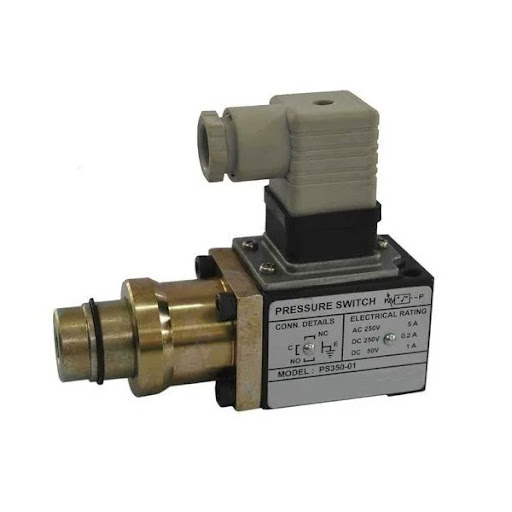
Fig25. hydraulic pressure switches
How the hydraulic pressure switch works
Hydraulic pressure switches are triggered by a drop or increase in pressure, depending on the needs of the application, and the two main methods of activating these switches are contact and non-contact. Contact activation involves physically placing the switch inside the system to be set, but contactless activation does not require physical placement but uses more advanced technology to allow setting outside the system. Contact pressure switches are usually more common.
“The hydraulic pressure switch consists of two main parts: the transducer and the switch.”
Danfoss pressure switch
Danfoss pressure switches are electromechanical controls and limiters that control the pressure of air and liquids within a certain range. All contact systems in Danfoss regulator units have a quick action system that maintains the contact force until the contact is broken. This feature makes the Danfoss pressure switch different from competing products that use microswitches.
“Danfoss kp36 pressure switch is one of the most widely used products of the Danfoss brand, which is usually used in cooling or air conditioning systems.’

Fig26. Danfoss pressure switch
Danfoss switch pressure setting
To adjust the pressure of the Danfoss switch, it is necessary to first put the system in Discharge mode or to manually discharge the system pressure. Then follow the following steps in order:
Power cut: The power input to the switch must be completely cut off and should not be connected until complete adjustment.
Opening the case: To do the wiring, it is necessary to open the case or house the pressure switch to access the terminal.
Wiring: The terminal has 3 ports, one phase must be connected to port 24 and one neutral to port 21, and a wire for the compressor or converter must be connected from port 22. In addition, a wire must be connected from port 21 to the air compressor. Then replace the pressure switch frame.
Pressure adjustment: All Danfoss pressure switches have two pressure adjustment screws, one of which is for high-pressure adjustment and the other for differential pressure adjustment. First, the highest pressure required by the device is selected. Then the differential pressure or minimum pressure is set.
Pressure switch element
The element pressure switch is a product from Turkey that conforms to European standards, which has significant quality and is used in pumps, and it can be considered the best brand of water pump pressure switch.
This pressure switch controls the process of pressure changes to control the pressure and when the pressure reaches a certain point, it sends a shutdown command as an electric switch. This pressure switch is used for pre-pump installation and low-pressure control.
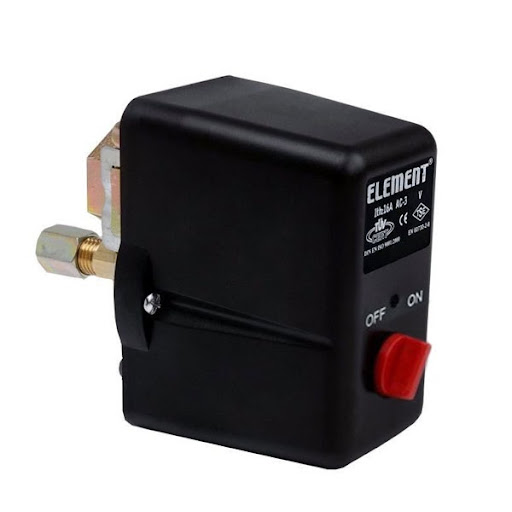
Fig27. element pressure switch
Honeywell pressure switch
The Honeywell pressure switch is one of the high-quality and standard products of the Japanese Honeywell company, which is used to activate a system at a certain pressure and can disconnect or connect the electric current path. Honeywell pressure switch is used for automatic control of fluid systems and pressure regulation and control in them. Honeywell brand pressure switch is mostly used for boiler steam industries.
pressure switches calibration
Calibration is an important process to ensure that a pressure switch operates correctly and within specified tolerances. Calibration involves comparing the output of the pressure switch to a known reference standard, such as a calibrated gauge or transducer, and adjusting the switch as needed to ensure that it operates accurately.
The calibration process typically involves several steps, including:
- Checking the set point: The set point is the pressure level at which the switch is designed to activate or deactivate the circuit. The technician will check that the switch is set to the correct pressure level.
- Measuring the output: The technician will measure the output of the pressure switch using a reference standard, such as a calibrated gauge or transducer.
- Adjusting the switch: If the output of the pressure switch does not match the reference standard, the technician may need to adjust the switch to ensure that it operates correctly.
- Re-testing: Once the adjustments have been made, the technician will re-test the pressure switch to ensure that it now operates within specified tolerances.
- Documentation: The results of the calibration process will be documented, including the date of calibration, the reference standard used, and any adjustments made to the pressure switch.
The frequency of calibration depends on the application and the manufacturer's recommendations. Some pressure switches may require calibration only once per year, while others may need more frequent calibration. It's important to follow the manufacturer's recommendations and to maintain proper records of all calibrations.
Pressure switches accuracy
The accuracy of a pressure switch depends on several factors, including the quality of the sensor and the calibration process. A pressure switch with high accuracy will respond quickly and reliably to changes in pressure, and it will provide consistent and repeatable results over time.
The accuracy of a pressure switch is typically specified as a percentage of the full-scale pressure range. For example, a pressure switch with an accuracy of ±1% of the full-scale range will have a maximum error of 1% of the full-scale range.
The accuracy of a pressure switch can be affected by factors such as temperature, vibration, and electrical noise. Therefore, it's important to follow the manufacturer's recommendations for installation and operation to minimize these factors.
In safety-critical applications, such as in the oil and gas industry or aerospace, pressure switches must meet strict accuracy and reliability standards. These switches are often subjected to rigorous testing and certification processes to ensure that they meet these standards.
It's important to select a pressure switch with the appropriate level of accuracy for the application. Choosing a pressure switch with higher accuracy than necessary can result in unnecessary costs while choosing a pressure switch with lower accuracy than required can compromise the reliability and safety of the system.
Advantages and disadvantages of using pressure switches
Advantages of using pressure switches
- Control: Pressure switches provide precise control over pressure levels in a system. They can be used to turn on or off pumps, motors, or other devices at predetermined pressure levels, helping to maintain safe and efficient operation.
- Automation: Pressure switches can be used to automate processes in a system, reducing the need for manual intervention and improving efficiency.
- Safety: Pressure switches play a critical role in maintaining safe operating conditions in many systems. They can help prevent damage to equipment and personnel injury by activating safety systems when pressure levels exceed safe limits.
- Versatility: Pressure switches are available in a wide range of pressure ranges, materials, and configurations, making them suitable for a variety of applications.
- Cost-effective: Pressure switches are generally cost-effective compared to other pressure control devices, such as flow control valves.
Disadvantages of using pressure switches
- Maintenance: Pressure switches require periodic maintenance to ensure proper operation, including calibration and replacement of worn parts.
- Sensitivity: Pressure switches can be sensitive to factors such as temperature, vibration, and electrical noise, which can affect their accuracy and reliability.
- Limited range: Pressure switches are typically designed to operate within a limited range of pressure levels, which may not be suitable for all applications.
- Limited functionality: Pressure switches can only perform simple on/off switching functions based on pressure levels, and cannot provide more complex control or feedback functions.
- Risk of failure: Like any mechanical or electrical device, pressure switches can fail over time, which can result in equipment damage or personnel injury if not detected and corrected promptly.
Pressure sensor applications
Pressure sensors are used in a wide range of applications across various industries. Some common applications of pressure sensors include
- Automotive: Pressure sensors are used in automotive applications to measure oil pressure, fuel pressure, and tire pressure. They are also used in engine management systems to monitor manifold pressure and air intake pressure.
- Aerospace: Pressure sensors are used in aircraft and spacecraft to measure cabin pressure, altitude, and airspeed. They are also used in engine control systems to monitor fuel pressure and turbine inlet pressure.
- Industrial automation: Pressure sensors are used in industrial automation applications to monitor hydraulic and pneumatic systems, and to control the operation of pumps, compressors, and valves.
- Medical devices: Pressure sensors are used in medical devices to measure blood pressure, respiratory pressure, and intraocular pressure. They are also used in infusion pumps to monitor fluid pressure.
- HVAC: Pressure sensors are used in heating, ventilation, and air conditioning (HVAC) systems to monitor air pressure and flow, and to control the operation of fans and dampers.
- Consumer electronics: Pressure sensors are used in consumer electronics devices such as smartphones and tablets to enable features such as touchless control and barometric pressure sensing.
- Environmental monitoring: Pressure sensors are used in environmental monitoring applications to measure atmospheric pressure, water pressure, and soil pressure.
- Robotics: Pressure sensors are used in robotics applications to measure force and pressure in robotic grippers, and to enable tactile sensing in robot fingertips.
Conclusion
In conclusion, pressure switches are an essential component in many industrial and commercial applications, providing precise control over pressure levels and helping to maintain the safe and efficient operation of systems. They are available in a wide range of pressure ranges, materials, and configurations, making them suitable for a variety of applications. While pressure switches require periodic maintenance to ensure proper operation, their advantages generally outweigh the disadvantages, as they provide precise and reliable control over pressure levels and play a critical role in maintaining safe and efficient operation in many systems. As technology continues to advance, pressure switches will likely continue to be an important component in many applications.
FAQs
Here are some frequently asked questions (FAQs) about pressure switches:
- What is a pressure switch?
A pressure switch is a device that senses changes in pressure and activates an electrical switch to control a process, such as turning on or off a pump, motor, or other devices.
- How does a pressure switch work?
A pressure switch typically consists of a pressure sensor, a switch mechanism, and a set of electrical contacts. When the pressure sensor detects a change in pressure, it activates the switch mechanism, which opens or closes the electrical contacts to control the process.
- What types of pressure switches are available?
There are many types of pressure switches available, including diaphragm-type, piston-type, and bellows-type switches. They can also be classified by pressure range, switching function, and electrical rating.
- How do I choose the right pressure switch for my application?
When choosing a pressure switch, consider factors such as the pressure range, accuracy, response time, electrical rating, and environmental conditions. Consult with the manufacturer or a qualified engineer to ensure that you select the right pressure switch for your application.
- How often do pressure switches need to be calibrated?
The frequency of calibration for pressure switches depends on factors such as the application, environmental conditions, and manufacturer recommendations. Generally, pressure switches should be calibrated at least once per year to ensure proper operation.
- Can pressure switches be repaired if they fail?
In many cases, pressure switches can be repaired if they fail. However, it is often more cost-effective to replace the switch, especially if it is an older model or has been in service for a long time.
- What safety measures should I take when working with pressure switches?
Always follow the manufacturer's recommendations for the installation, operation, and maintenance of pressure switches. Ensure that the switch is properly grounded and that electrical connections are secure. If you are working with high-pressure systems, wear appropriate personal protective equipment, and follow safe work practices.
Recent Posts
-
Booster Pump Troubleshooting and Maintenance: How to Fix and Prevent Common Issues
1. Introduction Imagine turning on your faucet only to be greeted with a weak trickle of water when …22nd Apr 2025 -
Energy-Efficient Booster Pumps: Selection and Tips for Maximizing Performance
1. Introduction Imagine never having to deal with fluctuating water pressure, noisy pumps, or skyroc …19th Apr 2025 -
Booster Pumps for Sustainable Water Systems: Irrigation and Rainwater Harvesting Solutions
1. Introduction Water scarcity is no longer a distant threat—it’s a reality affecti …16th Apr 2025




